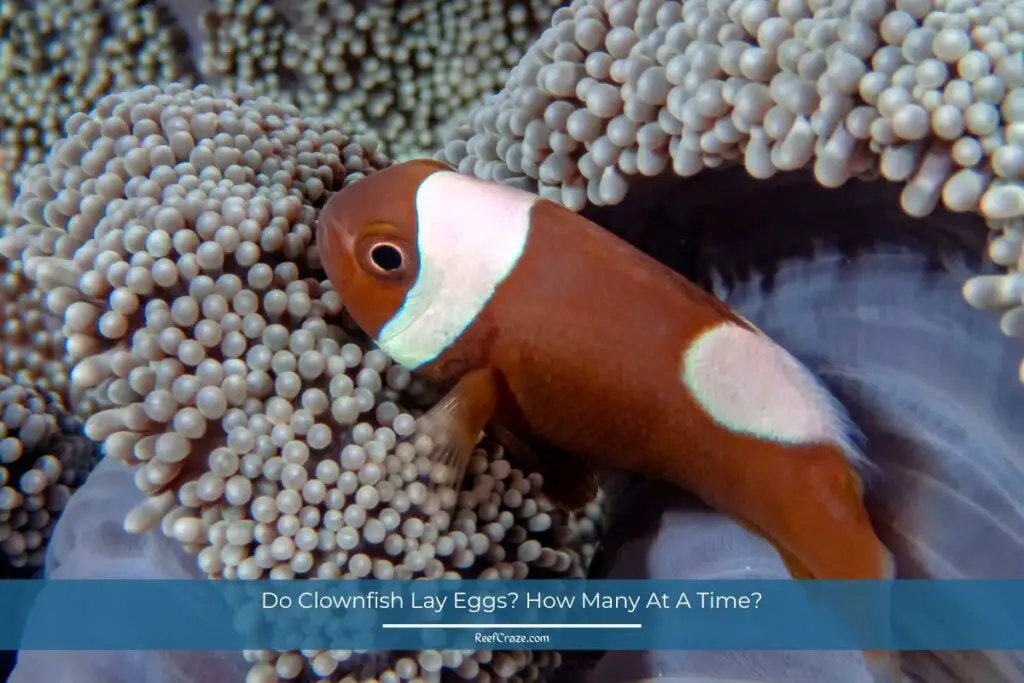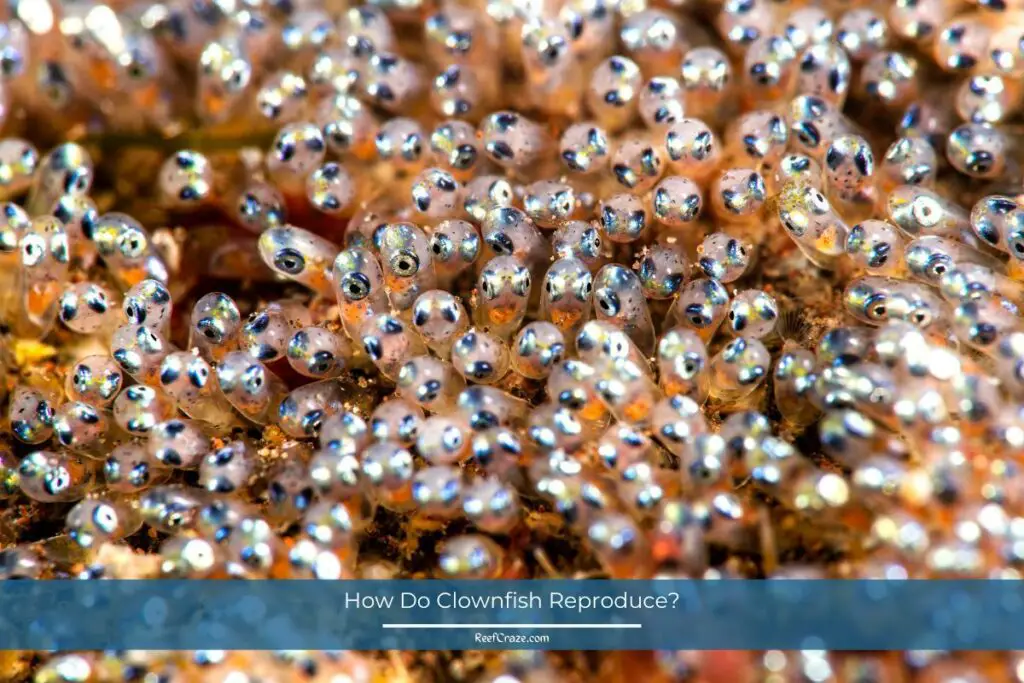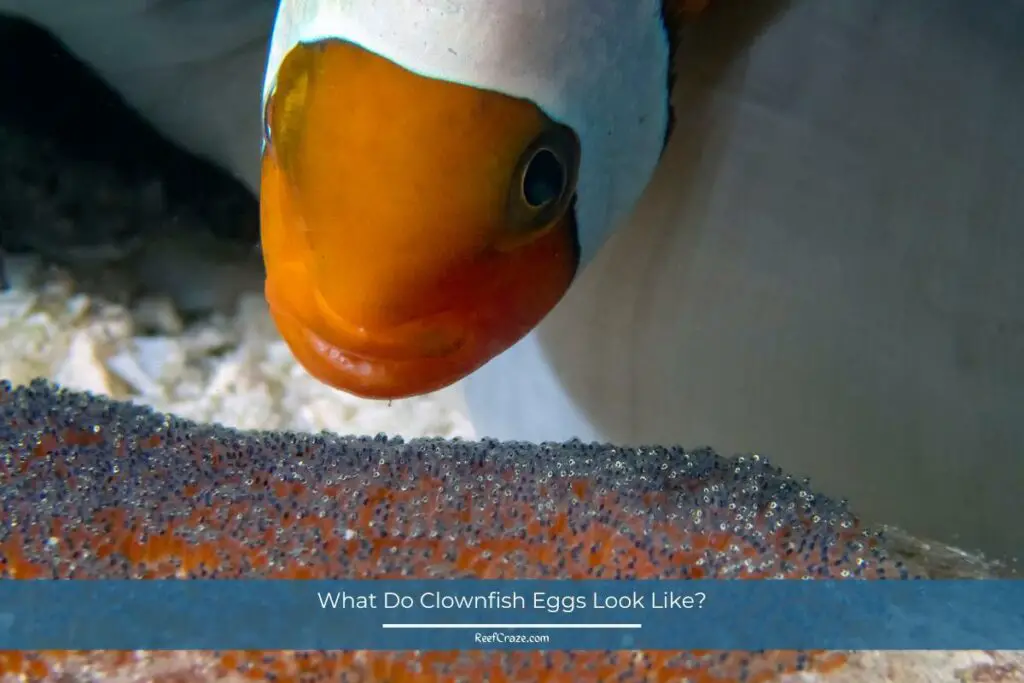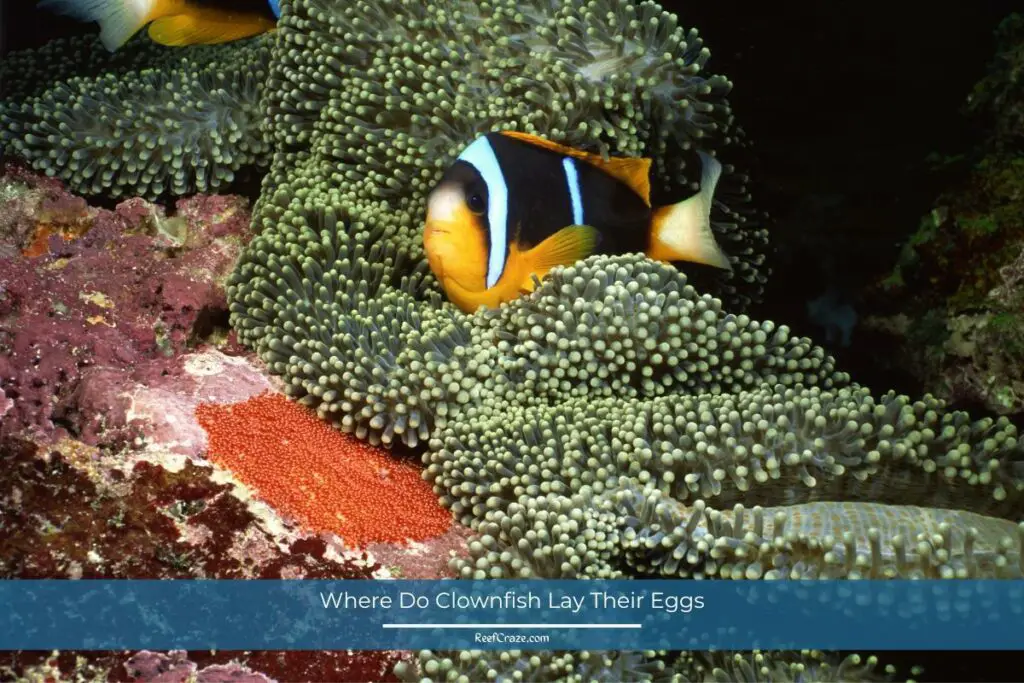Are you a Finding Nemo fan? Are you wondering how did Nemo come to this world? Did his mom bear him in her womb, or was he an egg once? Do clownfish, in general, bear babies or lay eggs?
Clownfish indeed lay eggs. You can visually notice in your tank when male clownfish fertilize the eggs. It takes around a week for the eggs to hatch. A female clownfish can produce 100 to 1000 eggs at one spawn.
If you are an aquarium enthusiast or about to adopt clownfish, you should know about their reproduction procedure. And we are going to discuss exactly that in this article.
Are Clownfish Oviparous (Egg-laying)?
Oviparous species are those that reproduce by laying eggs. This process contrasts with viviparous reproduction, where offspring develop inside the parent’s body.
Clownfish, scientifically known as Amphiprioninae, are indeed oviparous. But this is only the beginning of the intrigue. The process of egg-laying and the circumstances surrounding it are truly fascinating, offering a glimpse into the natural wonders of marine life.

How Do Clownfish Reproduce?
Clownfish reproduce by laying eggs in the anemone or inside a tank. It can be only possible when both male and female clownfish are available and bonded inside the tank, and they reach sexual maturity. The female clownfish lays the eggs inside the tank, and the male clownfish fertilize the eggs and take care of them until they hatch.
Clownfish are hermaphrodites, meaning all clownfish have both female and male parts on their bodies. Clownfish are born and brought us as male children and reached adolescence with male attributes.
All the clownfish will retain this adolescent male attribute except two. One of the fish will become an adult male and initiate breeding. Another one will change their gender, become female, and begin her production.

In a tank or anemone, only these two get to reproduce; one by laying eggs and the other by fertilizing those eggs. The other members of the anemone don’t get to breed unless the female clownfish dies or fails to produce eggs. In that case, another member will convert to the opposite gender and retain the reproduction cycle.
In the clownfish world, the female member is the stronger one, and others consider her the queen bee of a hive. Once she reaches sexual maturity, she will produce eggs and lay them in the anemone or tank. After laying eggs, she will drift off and ignore her produce. The male will fertilize the eggs and protect their eggs until they hatch and become fries.
Related Article: Clownfish Tank Setup Guide
What Do Clownfish Eggs Look Like?
Have you seen the orange fish roe on the top of sushi? Clownfish eggs, in their primary days, look like these orange dots. However, to see those eggs, you really need to squint your eggs or get a magnifier if you can. They are so tiny that you will have a hard time seeing that. After a few days, they will be a bit larger, and you can watch them with the naked eye.
When the male clownfish fertilizes the eggs, they will turn gray from orange. The eggs will elongate and lengthen in size, and their tiny eyes will be visible from the eggs. But only a few eggs will survive during the hatching period. The eggs that will reach maturity will turn into shiny silver tones.
On the hatching day, you can notice a little fry inside the eggs. Because the eggs will turn transparent, you will notice the baby swarming around inside the eggs. The tiny fry will look very darkish or grayish, and the eggs surrounding it will be silvery transparent. In short, the eggs will have an orange tone in the beginning, gray in the mid-time, and sliver at last.

How Many Eggs Do Clownfish Lay At A Time?
During a single spawning, a female clownfish can lay 100-1000 eggs, on average. However, this number is not absolute and can vary depending on the species of clownfish, overall health, and diet culture of the parent clownfish. Even though eggs are quite large in number, they are quite minuscule in size. Most eggs are 3-4 millimeters at best. Let’s see what will impact on the number of eggs laid by clownfish.
Specific Species
There are more or less 30 species of clownfish. Not everyone will breed the same way. Usually, a larger clownfish lays more eggs. Black strip maroon clownfish lays 1000 eggs in a single spawning. It can be more if the female is young and healthy. Meanwhile, a typical orange clownfish will lay 300 eggs in one go.
Health Condition
The age and health of the couple have an eventful impact on the number of eggs the female clownfish lays. A female clownfish attains sexual maturity after 1-2 years. During that time, her offspring will be larger in number and healthier in outlook. Gradually the mother will lose touch with her youth, and the number of eggs will reduce as well.
Diet Culture
Clownfish is an omnivore that eats both plant-based and meat-based food. However, this doesn’t mean they are meeting their nutrition quota. Most of the time, clownfish remain malnourished and under calorie deficit, which impacts the overall health and egg-laying capacity of the fish. A mother clownfish requires more zinc, magnesium, and vitamin in her diet.
Where Do Clownfish Lay Their Eggs?
Clownfish have a favorite area inside their territory where you can see they spend the most time, like us, in the bedroom. You can notice something different just a few days before the breeding season. Like a clownfish clearing up that space, taking the small rubbles and stones away and making the place suitable to give birth.
The place can be inside an anemone, in a coral reef, or on the top of a clay pot or plate. Clownfish prefer a sturdy structural surface for breeding and laying eggs. Aquarists who breed clownfish eggs on a regular basis attach a clay pot or tiles on the bottom of the tank where the mother can lay fish. After fertilization, aquarists take the clay pot away filled with clownfish eggs are raise them in separate tanks.

How Do Clownfish Protect Their Eggs?
Protection of eggs is crucial in the life cycle of Clownfish. After the female lays her eggs and the male fertilizes them, the male takes up the duty of safeguarding the nest. He tirelessly cleans the eggs by fanning and nibbling them, removing any algae or fungi that might threaten the embryos.
The vigilance and care of the male Clownfish increase the survival rate of the eggs. This parental behavior underscores the Clownfish’s commitment to ensuring the continuation of their lineage.
Related Article: Do Clownfish Eat Their Babies?
What About Hatching? [Egg Incubation Period]
When clownfish spawn regularly, they do it every 10-14 days in between. After the spawning, it takes 8-10 days to hatch if the father clownfish takes proper care of the eggs. However, the larvae usually hatch back-to-back nights. Other eggs hatch during the nighttime or after midnight.
You can trace the hatching by maintaining a calendar. If the water parameter and food ratio are stable, the spawning and hatching follow a parallel setting. If you find the eggs hatched on the 8th day of spawning, you can notice the next cycle will also bring the fish on the 8th day. If the time mismatches, it indicates ammonia and nitrate increase.
But the fact is, only a few will have the opportunity to hatch and become a fry. In the wild, not even 1% of eggs can survive and be able to hatch. In a tank with proper water quality, the chances are high but not so high. Only a couple of eggs out of a hundred will survive in the tank. A small fry that survived will come out of eggs within a few hours of hatching.
What Happens After Clownfish Eggs Hatch?
After the eggs hatch, the juvenile Clownfish, also known as ‘fry,’ begin their life journey. They are typically about 3 to 4 mm in length and bear little resemblance to their colorful parents. For the initial few days, the fry feed on their yolk sac. Once the yolk sac is consumed, they start feeding on plankton.
During this stage, the parent Clownfish do not provide any direct care. Instead, the fry depend on their instincts and the protection provided by the anemone for survival.
Final Words
Out of all the aquarium fish, clownfish are known for their quick reproduction and breeding attributes. It takes 1-2 years when a clownfish in the anemone to mature and initiates laying eggs. They are capable of laying 100-1000 eggs at a time, but sadly only a few of them survives and hatches.

